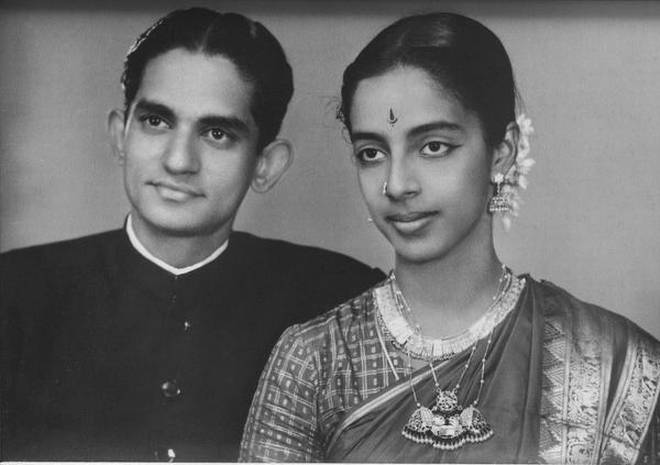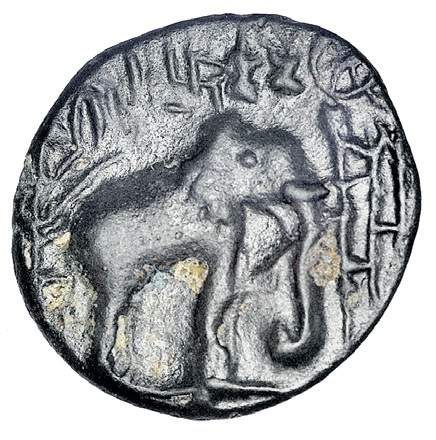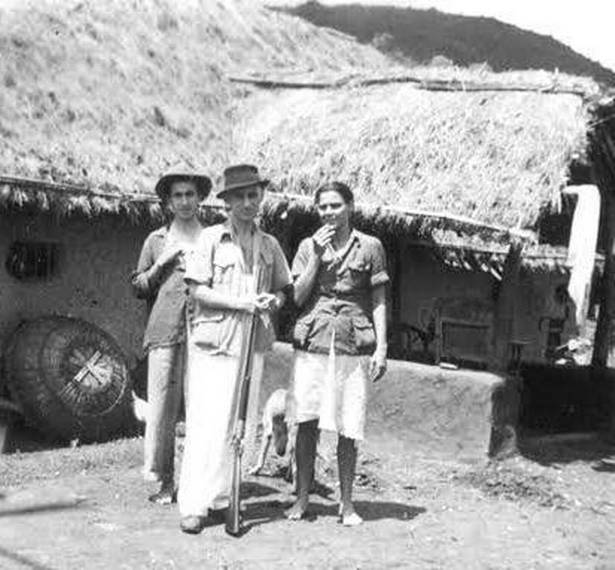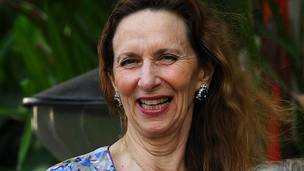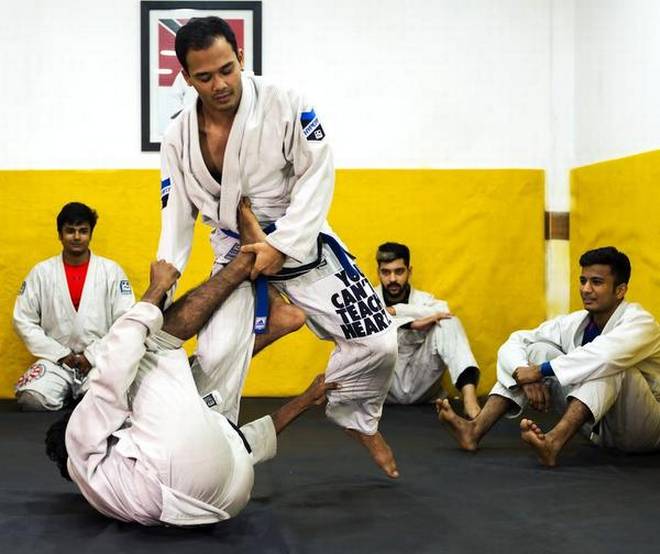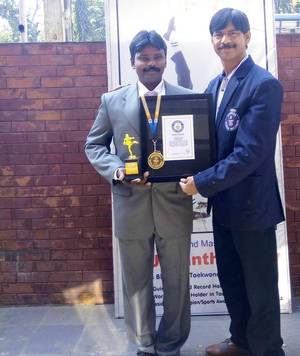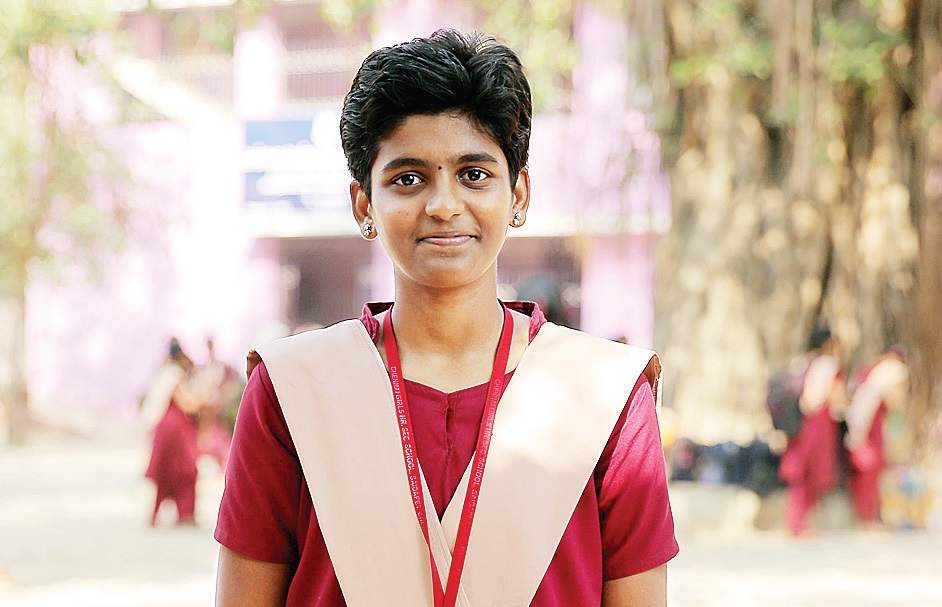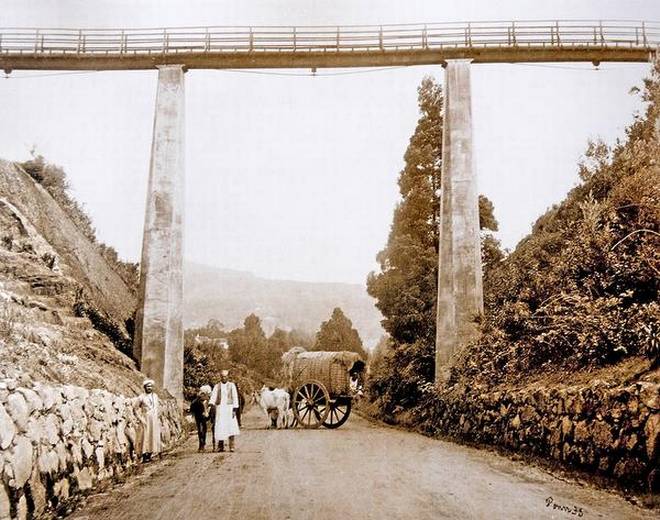Several visitors from abroad come every year looking for ancestors — something, meaning lineages, few Indians are interested in. I can only suggest to them the Archives or this church or that cemetery. But, what is a constant surprise is how much information they already have. And, providing an example were my latest visitors, Norman and Gwen Rider from the UK. They were looking for information about Charles Robert MacGregor Ferguson (1847-1920), the second great-grandfather of Gwen. This is what they’d already found:
Charles Ferguson was the son of Private James Ferguson, 15th Hussars, and Harriet (Chinnema) Chinamal. They had married in Bangalore where Charles Ferguson was born and baptised. James Ferguson died there in 1849. Harriet Chinamal died in Madras in 1903 and was buried in St Andrew’s Kirk. Tracing her family is one of the Riders’ least-likely-to-succeed quests.
The other quest is trying to trace Charles Ferguson’s career. He married Anne Elizabeth Ward in St Matthias’ Church, Vepery, in 1868. She died in Coonoor in 1878 after bearing him three children. He then married Alice Emmeline D’Abreu and had two daughters before she died the same year he did, when she was 64. Details about his career are scanty, also occasionally fanciful as in: “1861 — Lucknow. Government Survey Department, Post and Telegraph Department and became Postmaster General in Lucknow until 1902 and received a Government pension till the day of his death in 1920.” Joining service at 14? It was possible in those days for Anglo-Indian boys who’d learn on the job. But, Postmaster General sounds like gilding the lily. He was ‘Telegraph master’ in Pudupet in 1868, then, judging by family births and deaths (all listed), in Coonoor, Lucknow and Chittagong.
The note on Charles’ retirement reads: “Government pension Yelagiri Hills area of South India. Joined a group of Scots families who farmed at Sunnybanks and Bethany where they were self-sufficient growing crops and keeping animals.” He died in Salem and was buried there. Norman Rider added that it was recorded that on his father’s death Charles was left in the care of his godmother, Maria Sandway, in Bangalore in 1849 and that, it was believed, sometime thereafter, that the boy was placed in the Madras Male Orphans’ Asylum (from which St George’s, Shenoy Nagar, grew).
That’s quite a compilation from church and cemetery records and the British Library’s India: Select Births and Baptisms, 1786-1947 and India: Select Deaths and Burials 1719-1948. Even ‘select’, those must be quite some compendiums. But, for all that, the Riders still wonder whether there are Post and Telegraph and St George’s records to help them.
The Riders are only a couple of the hundreds of persons from the UK and elsewhere who come in search of roots. With all the modern technology available, can’t some kind of network be established to help these searchers?
A dance doyenne remembered…
Kalakshetra and Nrithyodaya recently remembered someone who had made Bharatanatyam a significant part of the Singapore cultural scene for which she was awarded that country’s highest honour for artists, The Cultural Medallion, and was selected for its Women’s Hall of Fame. The remembrance was the passing away of that dance ambassador, 79-year-old Neila Sathyalingam, in Singapore, recently.
‘Neila Maami’, to all her students, did post-graduation and, later, taught, at Kalakshetra. She and husband S Sathyalingam, a talented mridangist, an alumni, and a teacher there, moved to Singapore in 1974 with his job and founded Apsaras Arts in 1977. Bharatanatyam and Carnatic music flourished in Singapore as Apsaras grew. That growth included Rukmini Devi-style dance dramas, Kannagi and Sivagami, her last, two memorable ones.
The wedding of Suntharalingam Sathyalingam and Neila Balendra linked two of Colombo’s leading Jaffna Tamil families. Sathyalingam and I grew up together as neighbours, but none of that family’s love of music and dance rubbed off on me. Instead, I learnt about politics and ethnicity at the knee of that maverick Ceylonese politician, his father C Suntharalingam, a mathematics Tripos, too, who first used the word ‘Eelam’ in Parliament. None of his family was as committed to politics.
…. and a young hero too
The ambush of CRPF personnel in Chhattisgarh reminded me of a 60-year old action that Capt D P Ramachandran of the Colours of Glory Foundation narrated to me in great detail a while ago. In the 1956 ambush, a 30-plus patrol of the Sikh Light Infantry found itself surrounded by 500 Naga insurgents. Second Lieutenant Polur Muthuswamy Raman of North Arcot District had the choice to surrender or suicidally fight it out. The 21-year-old chose the latter. Four hours later, during which Raman was twice wounded, there was relief. Another patrol of Sikhs at a higher elevation, spotting their colleagues pinned down, fought their way downhill to join them. The link-up broke the insurgents, but Raman and Major Mehta Singh, who had led the other detachment, lost their lives.
Mehta Singh received the Kirti Chakra, the second highest gallantry award for counter-insurgency action. Raman got the highest award, the Ashok Chakra. Proudly, almost six decades after its alumnus had laid down his life in Nagaland, the National Defence Academy named a new academic building the ‘Raman Block’.
The chronicler of Madras that is Chennai tells stories of people, places and events from the years gone by and, sometimes, from today.
source: http://www.thehindu.com / The Hindu / Home> Society> Madras Miscellany – History & Culture / by S. Muthiah / May 08th, 2017
